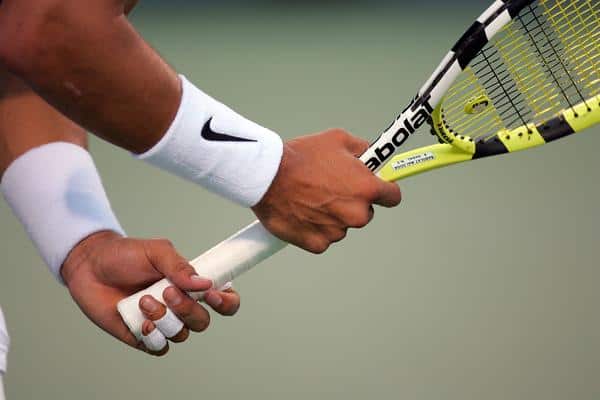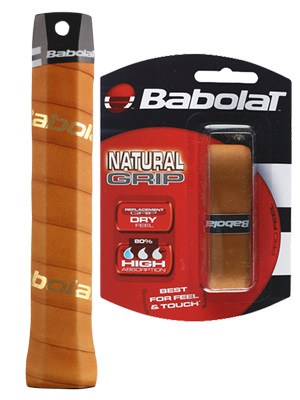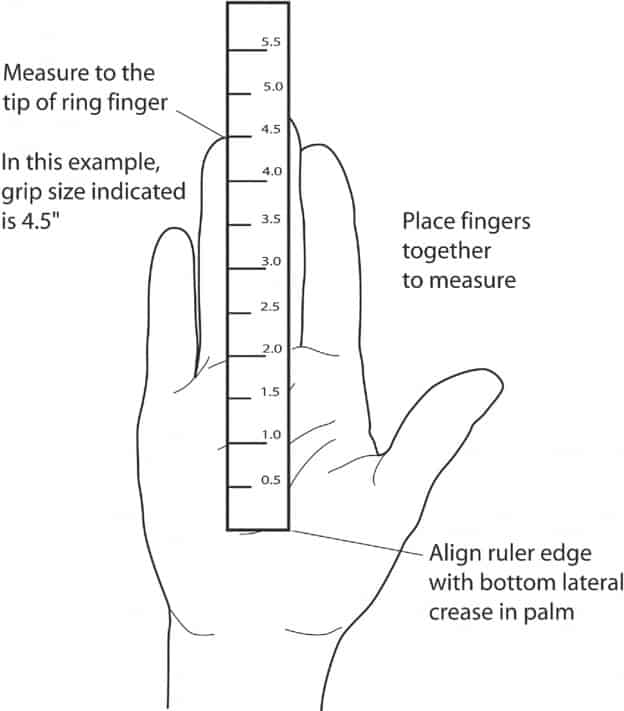
Have you ever tried throwing an old warn-down football? That’s one slippery little bugger without its pebbles. Just like the pebbles on a football help players make those clutch catches, the grip on your tennis racquet helps you make those crucial hits.
When it comes to your racquet’s grip, there are a few things you should know, like:
- The type and size of your grip
- Whether you should use an overgrip.
These little tips won’t just help you play better, they’ll also help you avoid the awkwardness that follows when that racquet slips out of your hand and breaks the nose of a bystander. Oops!
Grip Types
There are two basic grip types: leather and synthetic. Leather grips give you highly defined and beveled edges enhancing the “feel” of your racquet, which allows you to make faster more accurate grip changes. However, playing with leather grips can be pretty hard on your hands as they are slightly heavier and absorb less shock. If you go with this type of grip I recommend that you wrap an overgrip on top of the leather.
The other main grip type–the one most commonly used on today’s racquets–is synthetic rubber. These durable grips are tacky yet soft, adding a higher degree of comfort. If you really want to minimize vibration you can get synthetic grips with a gel backing. If you want to retain some of the leather grip’s “feel” advantage you can get a contour grip that has a raised bead of fabric to give your fingers a reference point.
Grip Size
Grip size is generally determined when you first purchase your racquet. You’re browsing the store for the perfect racquet, you find the perfect one, you gotta have it, can’t wait to try it out.
Woah there, friend!
We share your excitement but fear for your safety. The hasty purchase of a racquet with the wrong grip size is incredibly uncomfortable and can lead to injury. If you get a grip size that’s too big, well, sorry friend, nothing we can do. On the other hand, if you get a grip size that’s too small, we can help!
To build up a grip you’ll need a heat shrink sleeve that will conform to the handle of your racquet. I prefer this method to just adding more grips atop of each other – once you add 2 -3 extra grips they start to swallow the edges of your racquet’s handle.
“Should I Use an Overgrip?”
For me, the answer to this question is a big yes! I love the fresh tacky feel of a new overgrip – gives me an extra jolt of confidence on the court. Overgrips are thin so they don’t build up the size of your grip much. They’re also easy and inexpensive to replace, so I always keep that new grip feel!
By Joe Ewert, Elite Sports Clubs Tennis Pro & Racquet Technician

